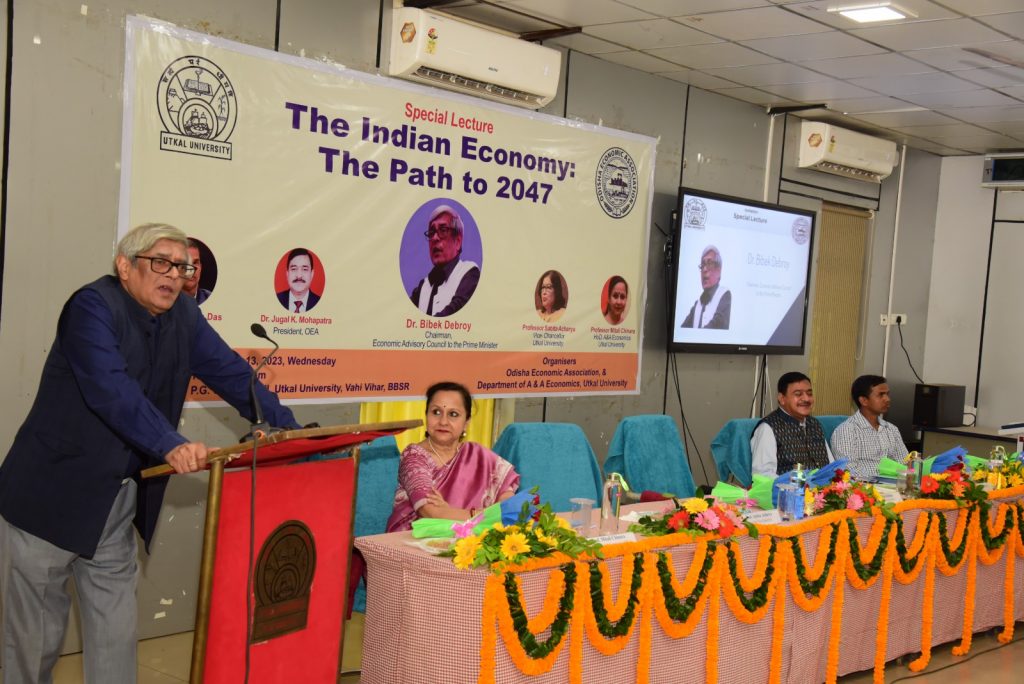Bhubaneswar: With the average 6.5 per cent annual growth rate, by 2047, India’s GDP shall reach 20 trillion USD, with a per capita income of around 10,000 USD. With this, India will become a high-income country, noted economist Bibek Debroy said.
Speaking at a special lecture at the PG Council Hall in Utkal University here, Wednesday, Debroy, who is Chairman, Economic Advisory Council to the Prime Minister of India, said that India may achieve 6.5 per cent to 7.5 per cent growth rate in the Amrit Kaal (the period until 2047), enabling the country attain the high per capita income country status.
He said with 7.5 per cent annual average growth rate India’s GDP may reach at 30 trillion USD by 2047. “With this India will become a developed economy,” he said adding that in order to achieve these targets, the country should spend around 10 per cent of GDP on infrastructure, 4 per cent of GDP on health, 6 per cent on education and 3 per cent on other sectors.
Debroy said at present, the per capita of India stands at 2500 USD. “In spite of that, India is relatively a low-income country. The richest countries have around 1,75,000 USD per capita income. In order to forecast the future growth and GDP of a country one needs to take strong assumptions on the exchange rate and inflation,” he said.
The economist said that to achieve 23 per cent of GDP expenditure, there is a need to increase the tax-GDP ratio substantially and reduce tax evasion and avoidance. “We need to focus not only on the devolution of funds from Union to states but also from states to local governments. We need to bring reforms in land, labour and capital markets in order to achieve more competitiveness. Although there is somewhat reform in the capital market, states need to work a lot on land and labour market reforms,” he added.
The lecture, titled, “The Indian Economy: The Path to 2047” was organised by the Odisha Economic Association in collaboration with the Analytical and Applied Economics Department at Utkal University.
PNN
